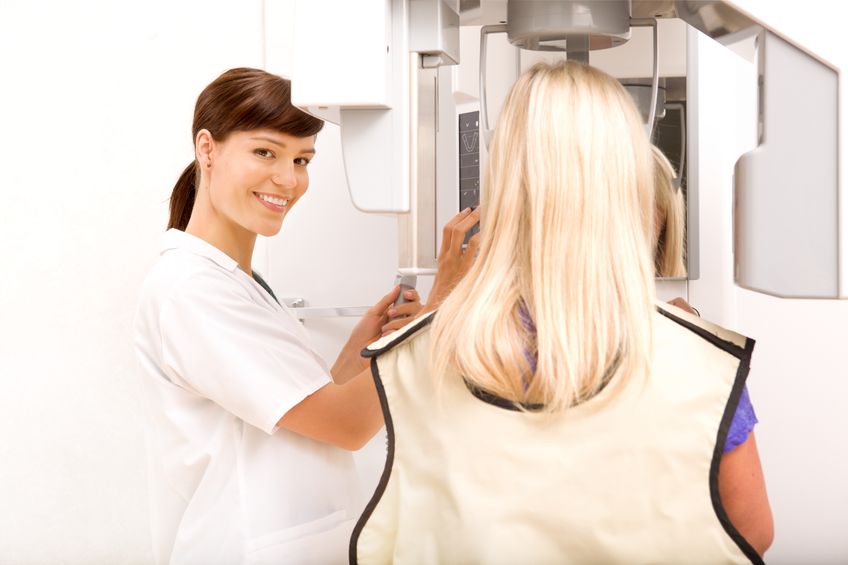From the Winter 2020 Journal of the Colorado Dental Association
Quality Assurance and Patient Exposure Rules Take Effect January 2020
Rectangular Collimation Required for Dental X-Ray Units by 2025
As shared with CDA members over the last year, the Colorado Board of Health recently considered and adopted changes to state x-ray rules that require the use of rectangular collimation for intraoral dental x-ray equipment by 2025. While the American Dental Association has recommended the use of rectangular collimation for years in order to reduce patient exposure, the CDA raised some concerns with the Board of Health about the cost for each dental office to implement this requirement and requested an extension on the implementation timeline to allow sufficient time for dental offices to retrofit or invest in new equipment as well as retrain and calibrate staff. The CDA was successful in securing an additional three years, extending the implementation timeline to 2025 in total. The Board of Health also committed to developing a feedback loop via the state’s x-ray certification unit to gather comments and feedback from the dental profession about any barriers or adverse impacts (such as untenable business costs or patient access restrictions) encountered as this rule is implemented. As soon as that feedback form is made available, the CDA will share it with members.
Collimator devices are available to retrofit nearly all intraoral dental x-ray equipment currently approved for use in Colorado. Rectangular collimator devices should be available through your office’s dental x-ray supplier. As you plan on these equipment upgrades, please keep in mind that most system changes to your x-ray unit will require recertification of the unit within 90 days of the change. The CDA will be seeking additional clarification from state x-ray regulators on whether machine recertification will be required when collimators are installed. To avoid potential costs of an additional recertification, dental offices may want to plan the installation of the rectangular collimator devices with their next scheduled recertification of the office’s x-ray units. Rectangular collimation is also becoming more widely available as a native feature of new equipment, so this option may be available to offices who plan to fully upgrade and replace equipment in coming years.
Rectangular collimation is not required for hand-held x-ray units, endodontic procedures and those procedures where a clinical indication requires a broader exposure field (these instances should be documented in the patient record).
New exposure limitations also apply to extraoral, panoramic and cephalometric units. These rules restrict the exposure field from being more than 2% greater than the image receptor. X-ray equipment vendors should be able to assist your office with meeting these calibration requirements.
Other significant requirements of the updated x-ray rules for dental offices include:
- Older x-ray machines (that operate at lower than 51 kvp) must be phased out by 2022.
- Thyroid shielding must be used on all pediatric patients (exceptions are given where a thyroid shield would interfere with the image).
- Annual evaluations of all protective garments (lead aprons and shields) are required by either the x-ray machine inspector or through a visual and tactile test by office personnel. Any finding of breaks, tears, holes, missing material or gaps requires the garment to be taken out of service, clearly marked as damaged and repaired or replaced. Garments in use must be clearly labeled with their lead equivalence and hung (not folded) for storage. A written procedure and criteria for this protective garment integrity evaluation must be developed and maintained in dental office records.
- A more robust and formalized quality assurance program is required for dental and medical offices and must include:
- Evaluation and documentation of the training or credentials for all x-ray operators (along with the office’s existing list of all machine operators, which must be updated annually);
- Designation of an appropriately trained individual to manage the quality assurance program for the dental office;
- Development of written quality assurance and quality control procedures that include evaluation frequencies or follow standards of an appropriate nationally recognized radiology organization;
- Participation in an annual review of the quality assurance program and quality control tests (with documentation of the reviews and evaluations being kept for no less than three years);
- Regular evaluation and troubleshooting, if indicated, of image quality (checking for artifacts);
- Quarterly repeat/reject analysis of radiographic images;
- Performance of routine preventative maintenance on x-ray equipment;
- Documentation of calibration of any testing instruments used in the quality assurance program; and
- Operation of equipment according to manufacturer recommendations unless otherwise specified in regulations or national standards (specific standards are itemized for manually developed film, digital imaging).
Excluding the rectangular collimation requirements, all other adopted rule changes take effect Jan. 14, 2020. A copy of the full text of the adopted rule changes to Parts 2, 6 and 12 of the x-ray regulations can be accessed at colorado.gov/pacific/cdphe/radregs.


